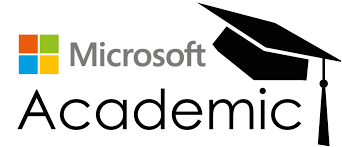PENERAPAN MODEL PEMBELAJARAN KEPALA BERNOMOR TERSTRUKTUR UNTUK MENINGKATKAN HASIL BELAJAR KIMIA SISWA
Abstract
ABSTRAK
Penelitian Tindakan Kelas ini meneliti penerapan model Kepala Bernomor Terstruktur untuk meningkatkan hasil belajar kimia SMA. Penelitian dilakukan dalam dua (2) siklus dengan 40 orang siswa kelas XI di salah satu SMA di Palembang sebagai sampelnya. Pengumpulan data dilakukan dengan menggunakan lembar ob-servasi dan tes. Rerata skor hasil belajar kimia siswa sebelum tindakan (T0) mencapai 67,88 dengan per-sentase ketuntasan belajar klasikal sebesar 55%. Setelah dilakukan tindakan pada siklus I, rerata skor hasil belajar kimia siswa (T1) meningkat menjadi 75,30 dengan persentase ketuntasan belajar klasikal 60%. Pada Siklus II rerata skor hasil belajar kimia siswa (T2) meningkat menjadi 77,69 dengan persentase ketuntasan belajar klasikal siswa mencapai 87,17%. Selain itu, aktivitas siswa juga meningkat tiap siklusnya. Hasil ini menunjukkan bahwa model pembelajaran Kepala Bernomor Terstruktur dapat meningkatkan hasil belajar kimia.
ABSTRACT
This Class Action Research investigated the implementation of Structured-Numbered Head Together model to increase high school chemistry learning achievement. The study was conducted in two cycle with 40 tenth grader in one of senior high schools in Palembang as its samples. The data was collected using observation sheets and test. Learning achievement average score before model implementation (T0) was 67.88 with 55% classical completedness average. After model implementation (T1), average score was increased to 75.30 with 60% classical completedness average. In Cycle II, learning achievement average score (T2) increased to 77.69 with 87.17% classical completedness average. Students’ activity was also increased in every cycle. These results suggested that Structured-Numbered Head Together model can improve chemistry learning achieve-ment.
Keywords
Full Text:
PDFReferences
Adeyemi, B.A. (2008). Effects of Cooperative Learning and Problem-Solving Strategies on Junior Secondary School Students’ Achievement in Social Studies. Electronic Journal of Research in Educational Psychology, Vol.6 No.3, hlm. 691–708.
Aqib, Z., Jaiyaroh S. Eko Diniati, dan Khotimah Kh. (2009). Penelitian Tindakan Kelas untuk Guru SD, SLB, dan TK. Bandung : Yrama Widya.
Haydon, T., Maheady, L., & Hunter, W. (2010). Effects of Numbered Heads Together on the Daily Quiz Scores and On-task Behavior of Students with Disabilities. Journal of Behavioral Education Vol.19 No.3, hlm. 222-238.
Ismuzaroh, S. (2013). Penerapan Hipnoteaching Melalui Neuro-linguistics Programming Dalam Pembelajaran Kimia. Jurnal Pendidikan IPA Indonesia Vol. 2 No.2, hlm. 178-182.
Maheady, L., Michielli-Pendl, J., Harper, G., & Mallette, B. (2006). The effects of Numbered Heads Together with and Without an Incentive Package on the Science Test Performance of a Diverse Group of Sixth Graders. Journal of Behavioral Education Vol. 15 No.1, hlm. 25-39.
Pandey, N. N., & Kishore K. (2008). Effect of Cooperative Learning on Cognitive Achievement in Science. Journal of Science and Mathematics Education in S.E. Asia, Vol. 26 No.2, hlm.52–60.
Ryan, A.M. (2001). The Peer Group as a Context for the Development of Young Adolescent Motivation and Achievement Child Development Vol. 72 No.4, hlm. 1135-1150.
Salta, K., & Tzougraki, C. (2004). Attitudes toward Chemistry among 11th Grade Students in High Schools in Greece. Science Education Vol. 88, hlm. 535-547.
Tella, A. (2007). The Impact of Motivation on Students’ Academic Achievement and Learning Outcomes in Mathematics among Secondary School Students in Nigeria. Eurasia Journal of Mathematics, Science, & Technology Education Vol. 3 No.2, hlm. 149-156.
Uguroglu, M.E., & Walberg, H.J. (1979). Motivation and Achievement: A Quantitative Synthesis. American Educational Research Journal Vol. 16 No. 4, hlm. 375-389.
Wachanga, S.W., & Mwangi J.G. (2004). Effects of the Cooperative Class Experiment Teaching Method on Secondary School Students' Chemistry Achievement in Kenya's Nakuru District. International Education Journal, Vol. 5 No.1, hlm. 26–36.
DOI: https://doi.org/10.18269/jpmipa.v21i1.36254
Refbacks
- There are currently no refbacks.
Copyright (c) 2021 Jurnal Pengajaran MIPA

This work is licensed under a Creative Commons Attribution-ShareAlike 4.0 International License.
JPMIPA http://ejournal.upi.edu/index.php/jpmipa/index is licensed under a Creative Commons Attribution-ShareAlike 4.0 International License
Jurnal Pengajaran Matematika dan Ilmu Pengetahuan Alam (JPMIPA) or Journal of Mathematics and Science Teaching
All rights reserverd. pISSN 1412-0917 eISSN 2443-3616
Copyright © Faculty of Mathematics and Science Education (FPMIPA) Universitas Pendidikan Indonesia (UPI)
View JPMIPA Stats









